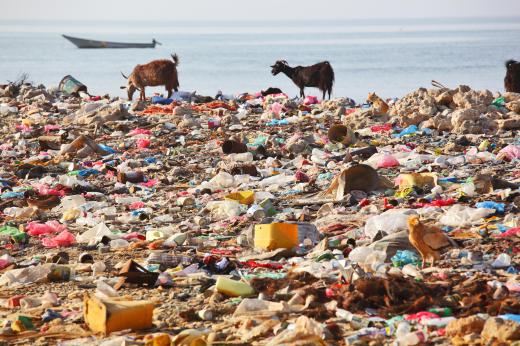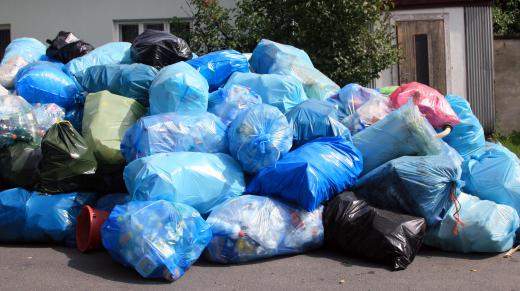A sanitary landfill is a waste disposal facility where layers of compacted garbage are covered with layers of earth. When the facility reaches capacity, a cap is applied to close the site. Sanitary landfills are one of the most popular methods for disposing of waste, although they have some distinct drawbacks. This technique for waste management was developed in the 1930s, in response to growing pressures created by a growing population.
The site for a sanitary landfill needs to be selected with care. Ideally, it should be located above the water table, in an area which is not geologically active. Other considerations may have to do with aesthetics; because landfills can be odorous at times, they are generally not located in immediate proximity to residential communities. The land also must be inexpensive to make the cost of operating the landfill worth it, and it must be accessible to roads so that garbage can be easily delivered.

Preparation of the site begins with establishing liners. It is common to start with a compacted clay base, followed by synthetic liners, with pipelines to trap and carry materials which leach from the landfill, including fluids and gases. Then, deposition of garbage can begin. At any given time, the landfill has a small exposed working area, with the rest of the site being covered. Maintaining a working area at a sanitary landfill minimizes pests such as rodents and insects. This can be costly, and at landfills that lack funds, exposed garbage can create a serious health hazard.

One of the biggest problems with a sanitary landfill is the environmental hazard. As materials inside the layers of compacted garbage break down, they generate gases, including methane, which are flammable. Some landfills simply vent these gases, while others actively trap them, using them as fuel. Landfills also generate leachates, materials which could damage the natural environment if they end up in the water table, making control of leaching critical.
Once a sanitary landfill is closed, the work does not stop. The site needs to be maintained and monitored. Often, landfills are reclaimed once they are full, with the area on top being used to make sports fields, parks, office parks, and so forth. These uses can only be approved when it is clear that the site has been well secured, and when there are systems in place to handle methane gas and other materials which may leach or vent from the landfill.
Ever since she began contributing to the site several years ago, Mary has embraced the exciting challenge of being a About Mechanics researcher and writer. Mary has a liberal arts degree from Goddard College and spends her free time reading, cooking, and exploring the great outdoors.

